Speaker
Description
One of the cornerstones of the successful physics operation at Belle II is its trigger system that is managing outgoing data rates with the help of its central drift chamber (CDC). While it is performing well in estimating event tracks with vertices that can be traced back to the interaction point, it is not designed to handle events with displaced vertices which are important for future dark matter studies. Already at the initial stage, located directly after the detector readout, the Track Segment Finder (TSF) is suppressing typical background by only allowing tracks that enter and exit the CDC with a limited opening angle. In this paper, we present the first studies to break up these limitations to extend the range of events recorded by the experiment. At first, we will show a straightforward extension of the current TSF by allowing supporting larger acceptance angles. Afterward, an alternative approach is presented with a novel neural network-based TSF (neuroTSF), which allows new opportunities by providing higher flexibility, accuracy, and more functionality at an early stage in the trigger pipeline. Both approaches were prototyped on FPGAs with first resource and latency estimation being presented and discussed. We additionally show the potential of the neural network approach by presenting the efficiency using generated test data. While having high resource demand, it is shown that the neuroTSF approach has a high potential to be used in future operation.
| Primary experiment | Belle II |
|---|
